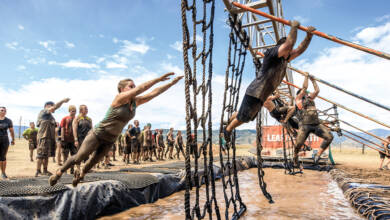
What is the Komodo dragon?
Reaching up to 10 feet in length and more than 300 pounds, Komodo dragons are the heaviest lizards on Earth. They have long, flat heads with rounded snouts, scaly skin, bowed legs, and huge, muscular tails.
Habitat
Komodo dragons have thrived in the harsh climate of Indonesia’s Lesser Sunda Islands for millions of years. They prefer the islands’ tropical forests but can be found across the islands. Though these athletic reptiles can walk up to seven miles per day, they prefer to stay close to home—rarely venturing far from the valleys in which they hatched.
1. KOMODO DRAGONS ARE ALSO KNOWN AS ORAS.
Western scientists didn’t find out about the giant reptiles until 1912, but long before they finally showed up on academia’s radar, Komodo Island natives had given them the name ora, which means “land crocodile.”
2. KOMODOS ARE EXCELLENT SWIMMERS.
Traveling between Indonesian islands is often a necessity for hungry Komodo dragons; the animals are sometimes spotted paddling along miles off shore.
3. NO CARCASS IS SAFE AROUND A KOMODO DRAGON.
Snakes and many lizards have forked tongues to pick up microscopic, airborne taste particles. After being exposed to air, the tongue gets retracted and its prongs are inserted into the animal’s Jacobson’s organ (located on the roof of its mouth). This enables the reptile to identify whatever flavors it’s just picked up, which allows Komodo dragons to start tasting a scrumptious carrion dinner from more than two miles away.
4. GEORGE H.W. BUSH RECEIVED A KOMODO DRAGON AS A GIFT.
Halfway through his only term, Bush 41 was given an ora male, courtesy of Indonesia’s government, named Naga. While the idea of letting a giant lizard prowl around the Oval Office sounds pretty awesome, the president instead chose to hand him over to the Cincinnati Zoo. After fathering 32 youngsters, the illustrious critter passed away in 2007 at the respectable age of 24.
5. KOMODO DRAGONS ARE VENOMOUS.
Ten years ago, scientists believed Komodo dragons had saliva laden with really deadly bacteria, and that bites containing the spit were potent enough to bring down a water buffalo. But that wasn’t actually the case: In 2009, biochemist Brian Fry tested this conventional wisdom by hunting for dangerous microorganisms inside several Komodo dragon mouths. Fry learned that, contrary to popular opinion, their chops have proportionally fewer bacteria than most meat-eating mammals do. Furthermore, Fry found no trace of any especially-hazardous ones. What he did find was venom glands. Situated in the lower jaw, these release a nasty cocktail that causes paralysis, extreme blood loss, inadequate clotting, tissue damage, and excruciating pain. Those poor buffalo never stood a chance.
6. KOMODOS CAN CONSUME 80 PERCENT OF THEIR BODY WEIGHT IN ONE SITTING.
Having freakishly-flexible jaws really helps these creatures gorge. As you can see in the clip above, Komodos can swallow smallish animals (like mid-sized piglets) whole.
7. KOMODO DRAGONS HAVE KILLED AT LEAST FOUR PEOPLE IN THE LAST FIVE DECADES.
Mortal encounters between Komodo dragons and humans were documented in 1974, 2000, 2007, and 2009. The 2009 attack involved a man who fell from an apple tree and was mauled by two dragons while lying dazed on the ground. As a general rule, Komodo dragons prefer raiding graves to killing people, so natives frequently pile rocks over their loved ones’ tombs as a deterrent.
8. SMALLER KOMODO DRAGONS ROLL AROUND IN FECES TO AVOID GETTING CANNIBALIZED.
Adults are anything but picky eaters and won’t think twice about devouring their own offspring. Until they grow large enough to fend for themselves, young Komodos keep away from hungry grown-ups by taking to the trees, where they become nimble, branch-climbing predators. Still, this isn’t always enough. When close encounters are imminent, juveniles make themselves as unappetizing as possible by rolling in dung, which not even the most ravenous dragons can stomach.




